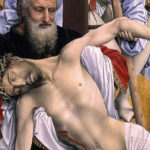
Every good thing (like family) in our lives is dogged by shadows that can distort the good thing (like family) to something bad (like family). We need to remember that everything bad is not bad-bad. Much that is wrong is mild, even humorous, except that the accumulation adds up to unsatisfactory results – sometimes serious to life. I just finished a conversation in which my caller reminded me that he had remembered the principles of effective debate we had reviewed long ago. He was thankful that we had reviewed the difference between rationalization and being rational. To rationalize was to take good rules of discovering the best thought and action, and distorting them to find what we wanted in the… Read more







